The world was in a desperate battle with the Nazis when a German spy climbed to the third floor of a red-shingled home in Wading River to reveal the most closely guarded secret of World War II — the location of the coming invasion of Europe. The man, a dapper Argentine living in the United States, keyed out the information on a transmitter that told the Axis powers (Germany, Italy and Japan) where to repel the attempt and secure their victories on the continent.
There was one problem.
The man was not a Nazi spy; he was a double agent. A German operative was not seated at the transmitter; the message was typed out by an FBI man posing as him. And the intelligence was not that the invasion would come at Pas de Calais or Normandy as Adolf Hitler anticipated. It would come through Norway.
The Germans, masters of propaganda and deception, swallowed it all.
“They were completely bamboozled,” said Raymond J. Batvinis, who relates the tale in his book “Hoover’s Secret War Against Axis Spies” (University Press of Kansas, 2014).
How a peaceful farmhouse perched on a bluff overlooking Long Island Sound became a top-secret operation is a story worthy of a movie (“The House on 92nd Street,” which came out in 1945, is partly based on it). The entire episode was so furtive that even on this, the week of the 78th anniversary of D-Day, June 6, 1944, it remains largely unknown.
“If I did a survey asking about the Benson House,” said Sidney Bail, president of the Wading River Historical Society, “most people wouldn’t know a thing about it. But it’s a story worth telling.”

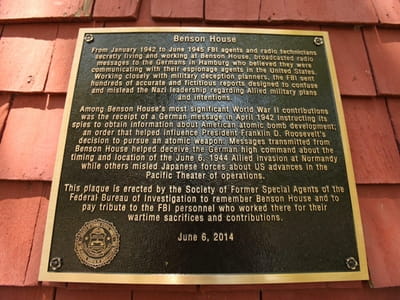
Shrouded history
What has been revealed by history is that this quiet nest of counterspies sent out a dizzying stream of misinformation during the 3½ years it was headquartered there, much of it concerning the all-important Allied invasion.
Using truths and half-truths to keep the trust of their contacts, FBI agents created fake armies, imaginary troop movements, conflicting invasion dates and distant landing spots that kept the enemy off balance.
“Even after the Allies landed, there was a significant delay by Germany bringing their full forces to bear,” said Batvinis, who unearthed the spy operation in FBI files in 2010. “Hitler was still convinced it was all a diversion.”
Travel to the site now and you will find a busy summer retreat teeming with vacationing families and laughing children. Occasionally, guests ask about the pictures and narrative concerning the event pinned to the living room wall inside Benson House, now part of Camp DeWolfe. The property was bought in 1945 by the Episcopal Diocese of Long Island with funds donated by a Brooklyn woman, Mary Benson.
On the National Register of Historic Places, the home also has a plaque from the Society of Former Special Agents of the FBI tacked to outside that gives a thumbnail sketch of its past, but little physical evidence remains of its wartime role.
The antenna used to beam messages to Hamburg, Germany, has been lost in the forest. A concrete pedestal in the basement that served as the base for a Buick engine is the only remnant of the homemade generator used to run the transmitters. The engine prevented a power surge that might have attracted attention from the electric company.
Howard R. Hawkins, who later became a pioneer in international satellite communications, was put in charge of the operation. He served as an FBI consultant in the 1945 “House” movie but remained tight-lipped about the real operation his entire life despite being pestered by his children, said his son, Howard Hawkins Jr., a Glen Cove resident.
“He never told us much,” he said. “All we got were scraps of information.”
After the war, the equipment was packed up and the men dispatched to new assignments, said Batvinis, an FBI agent for 25 years who taught a counterintelligence course at the FBI Academy and is the historian for the former agents society.
“Everything just faded into history,” he said.
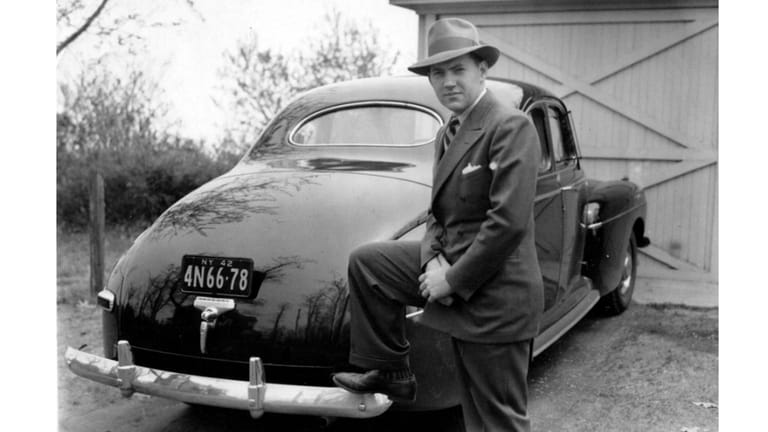
Howard R. Hawkins, FBI special agent in charge of a counterespionage radio station that communicated with German intelligence, in Wading River in 1942. Credit: Hawkins Family
The double spy
The man who started all the intrigue could have come straight from a Graham Greene thriller.
Jorge Mosquera, a short, stocky Argentine who imported German goods to Latin America, was recruited in 1941 by the Abwehr (the German military intelligence organization) to become a spy in the Western Hemisphere. Needing money, he agreed and was sent to spy school, learning about codes, secret ink and microdots — page-size messages photographically reduced to the size of a period and hidden in correspondence.
His mission was to set up a radio station in Uruguay, then travel to the United States and write back about what he learned.
Instead of following orders, Mosquera marched into the U.S. embassy in Uruguay and turned over a wealth of spy documents. They included microdots containing the names of 16 other Abwehr spies. After this was verified by the FBI, he was escorted to American shores and kept at an apartment in Manhattan. There, he spent time badgering the FBI for money and to find Broadway roles for his would-be singer girlfriend.
“He was a handler’s nightmare,” said Batvinis, who grew up in East Islip.
In 1942, agents began looking for a place on Long Island to set up a clandestine radio operation that Mosquera supposedly had secured. This required delicate maneuvering. Locals were on guard against strangers — and for good reason. German submarines had actually sunk ships in the Sound at the beginning of the war. At one point in 1942, a U-boat landed in the Hamptons with a team of saboteurs who were quickly rounded up after a turncoat notified the FBI.
Richard Millen, a young agent, physicist and radio engineer who had helped set up similar FBI operations, began searching for a base with two important features:
One, the location had to provide good atmospheric conditions for trans-Atlantic transmissions. Two, it had to be isolated. The three-story frame structure high on a bluff in a densely wooded area two miles from the nearest road met both requirements.
The Wading River counterspy operation was born.

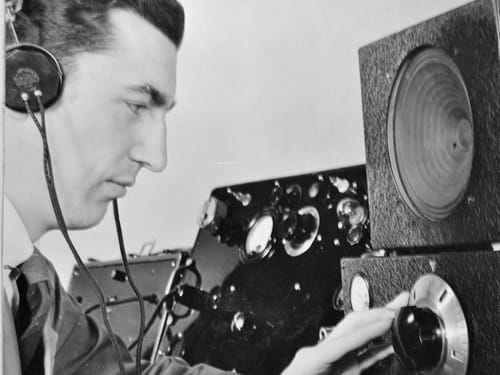
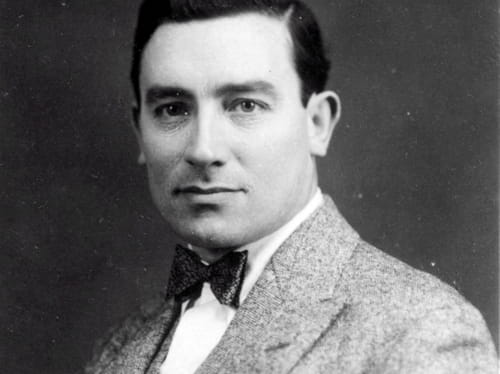
A cover story
Agent Donworth Johnson made arrangements to rent the home for his family, including his new wife, Betty Ann, and baby daughter, Vicki Jean.
The tall, lean agent’s cover story was that he needed fresh air to recuperate from tuberculosis, the reason he hadn’t been drafted.
Radio equipment was sneaked in by night and assembled on the top floor. Shelves soon were crammed with backup vacuum tubes, wiring, dials and extra radios. The FBI team slept on the second level. Johnson and his family took the first floor. An intimidating German shepherd named Clifford kept watch on the grounds.
In January 1942, agents using the guise of Mosquera started broadcasting. The cat-and-mouse espionage game began. The Abwehr’s most urgent request at the time was for information about America’s progress on making an atomic bomb.
Mosquera’s contact in Hamburg had presciently stated in their first meeting that the “victor in this war will be the one which has accomplished the task of shattering the atoms and applying the result thereof.”
Stymied at first and knowing nothing about nuclear fission, FBI agents came up with a number of magazine articles filled with speculation by U.S. scientists on the subject. The transmitted information apparently satisfied the Nazis though it was essentially worthless.
How much these queries influenced the go-ahead for the atomic bomb effort in the United States isn’t known. Albert Einstein, along with other scientists, had already signed a famous letter to President Franklin Roosevelt in 1939 emphasizing the terrifying prospect that the Germans might beat them to the punch.
Mosquera's information was part of several spy sources that likely added urgency to Roosevelt’s decision, Batvinis said Soon afterward, the Manhattan Project was launched.
Their second challenge was part of large-scale effort to befuddle the Nazis about the European invasion. Everyone knew the move was a daring gamble. In a statement to troops just before the assault, Allied commander Dwight Eisenhower predicted victory. But knowing the Nazis were waiting with Panzer tanks and pillboxes (concrete bunkers), he also prepared another letter conceding defeat.
All realized the key to the invasion’s success was disguising where and when it would begin.
When the agent impersonating Mosquera mentioned a possible cross-channel invasion in 1943 and the transport of U.S. troops to England, this perked up German ears. “Your last message very interesting,” the Germans wired back. “Hope to hear more from you.”
A blizzard of misinformation followed.
To depress German morale, the counterspy operation told of techniques discovered by the Air Force to carry greater bombing loads and new infrared devices to spot targets through clouds. The scary B-29 Superfortress, with its bigger bomb payload, was being prepared for shipment to England, they added. There was a troop buildup on the East Coast and transport drivers were being trained for lefthanded driving. Then came the report that several thousand GIs were being issued winter clothing indicating a possible attack through a Nordic country.
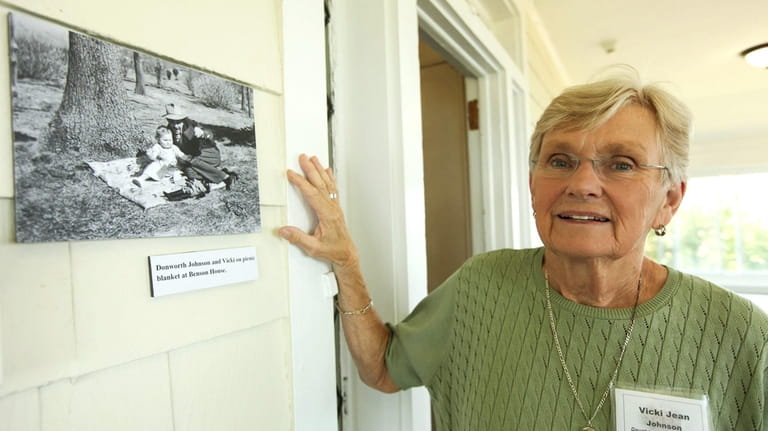
In 2014 on the 70th anniversary of D-Day, Vicki Jean Johnson attended a commemoration of the FBI operation at what's now called Benson House. The episode has remained a mystery to Johnson, the toddler seen in photos at the house during the period. Credit: Barry Sloan
Keeping up pressure
Even after the D-Day invasion at Normandy, the Wading River agents insisted there were strong indications of a “major attack” coming through Norway, the Mediterranean or Balkans.
Taken together, all this convinced Hitler that the current military action was only a feint and he held back troops to counter the made-up assault. It was a fatal mistake. By the time the Nazis realized Normandy was the real thing, its beaches were under Allied control.
Later in the war, the Wading River group passed along false information (through Germany) to the Japanese that the U.S. naval fleet planned to attack Taiwan and the south coast of China. This successful ruse was meant to keep the foreign fleet in home waters and away from the real U.S. targets — Iwo Jima and Okinawa.
The Germans trusted their Long Island Argentine spy to the last, offering payments of $40,000 for more intelligence even as British forces closed in on Hamburg.
When the war ended in 1945, the FBI agents disassembled their equipment and evaporated. No one knows what happened to Mosquera, Batvinis said. The Johnsons divorced.
In 2014 on the 70th anniversary of D-Day, a commemoration was held at what's now called Benson House. The celebration included FBI officials and Johnson’s daughter, Vicki Jean Johnson.
The episode has remained a mystery to Johnson, the toddler seen in photos at the house during the period. Now 81 and a former phys ed teacher in Selma, Texas, always has to explain that she doesn’t remember much, having been told very little by both parents, even later in life.
“They left me totally in the dark,” she said. “I’m not sure why. Maybe they were told not to.”
The specifics of the counterspy operation might never have come to light except for the Watergate scandal, Batvinis said.
That debacle gave rise to the strengthening of the Freedom of Information Act by Congress in 1974, when it overrode a veto by President Gerald R. Ford based on the strong objections of staff including Dick Cheney, Donald Rumsfeld and Antonin Scalia, three who would go on to become a vice president, a secretary of defense and a U.S. Supreme Court justice, respectively.
The secretive FBI director J. Edgar Hoover never wanted to release any of the files. Still, the legislation spurred historians and journalists to begin digging through documents chronicling long-hidden activities, leading to Batvinis’ discovery of the Wading River operation.
“The assumption was this would remain a secret forever,” he said.



